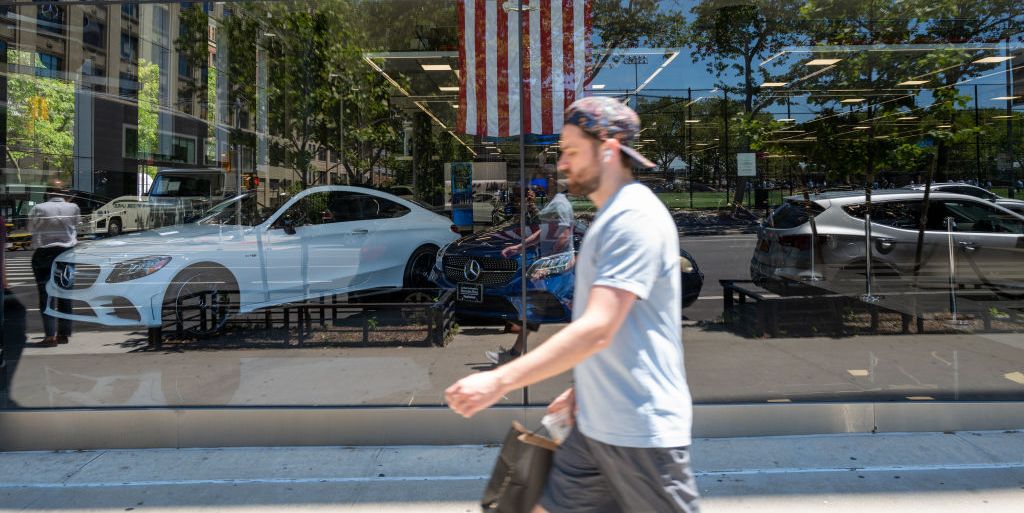$650 to More Than $700 Is Now Average for Monthly Car Payment

Spencer PlattGetty Images
Depending on whom you ask, the average car buyer in the U.S. is paying $657 (Edmunds.com) or $712 (Moody’s) a month for their new vehicles.The driving factors include all of the pieces that have pushed average prices up in the past year—May was the second-highest month on record—like the pandemic and inflation, as well as continued strong demand.Last week, the the Federal Reserve raised interest rates by 0.75 percentage point, which could make borrowing money for new cars even more expensive, so it’s a good time to be a discerning shopper and to make sure your personal credit rating is good.
Inflation is everywhere, so it’s not surprising, even though it’s discouraging, to see the monthly cost to finance a new car reaching record highs, or to hear that experts predict this situation will continue for months to come. Figuring out exactly how much people are now paying differs depending on who’s doing the counting, with Edmunds.com finding the average payment for a new car in May reached $656, while Moody’s Analytics calculated the amount to be $712.
Whatever the calculations say, the rise in payments is being driven by factors that anyone paying the slightest bit of attention to the news should be able to guess: supply-chain issues and inflation caused or made worse by the pandemic. These factors have helped push the average price of a new car up and up and up, which is of course connected to the high monthly payment. The latest available numbers are from May, when the average price of a new car hit $47,148, according to KBB. That’s the second-highest monthly average on record, just below the $47,077 average we saw last December. According to the U.S. Bureau of Labor Statistics, new-car prices have risen 12.6 percent compared to a year ago, while used-car prices are up 16.1 percent.
When it comes to inflation, the Federal Reserve raised interest rates by 0.75 percentage point this past week, a move the Washington Post called part of the government’s “war on inflation.” The 0.75-point increase was the Fed’s largest rate hike since 1994, part of what the Fed said was its mission “to achieve maximum employment and inflation at the rate of 2 percent over the longer run.” Based on information from the Bureau of Labor Statistics, the annual inflation rate in May was 8.6 percent, the highest level since 1981.
Is There a Silver Lining?
According to the New York Times, the average interest rate for new-car loans was 5.08 percent in May, while the average rate for used vehicles was 8.46 percent. Higher interest rates mean it costs more to borrow money—but the good news, if you already have a loan, is that the higher interest rate will not change your monthly payment or what you owe.
Of course, if you’re buying a car now, your financing offers might be higher than they would have been before last week. Or they might not, as Yahoo Finance points out, since car loans are “so reliant on the buyer’s individual credit score and history” that any effects of the higher interest rate will not fall on each buyer in the same manner.
This content is imported from {embed-name}. You may be able to find the same content in another format, or you may be able to find more information, at their web site.
This content is created and maintained by a third party, and imported onto this page to help users provide their email addresses. You may be able to find more information about this and similar content at piano.io



